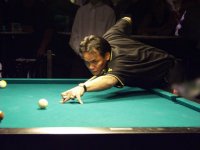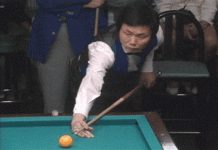Read the first fundamentals and did enjoy it. I am going to have my pool chops tested soon and will certainly be looking for something solid to stand on. The stroke seems like the obvious place to build from...thanks.
I have a question about the other end of the stick tho. The front end. I have often heard talk on 3c tapes about the bridge hand and the role it plays in the execution of shots, not pertaining to the obvious function of aim, but in the generation of subtle forces as a result of the bridge configuration.
For instance, 1 (below) vs. 2:
How does the tension in the front hand affect the stroke delivery and why is it that pool-players (can?) seem to ignore it's effects?
Thanks, Deno. It all made sense in my head
I have a question about the other end of the stick tho. The front end. I have often heard talk on 3c tapes about the bridge hand and the role it plays in the execution of shots, not pertaining to the obvious function of aim, but in the generation of subtle forces as a result of the bridge configuration.
For instance, 1 (below) vs. 2:
How does the tension in the front hand affect the stroke delivery and why is it that pool-players (can?) seem to ignore it's effects?
Thanks, Deno. It all made sense in my head
Attachments
Last edited:

